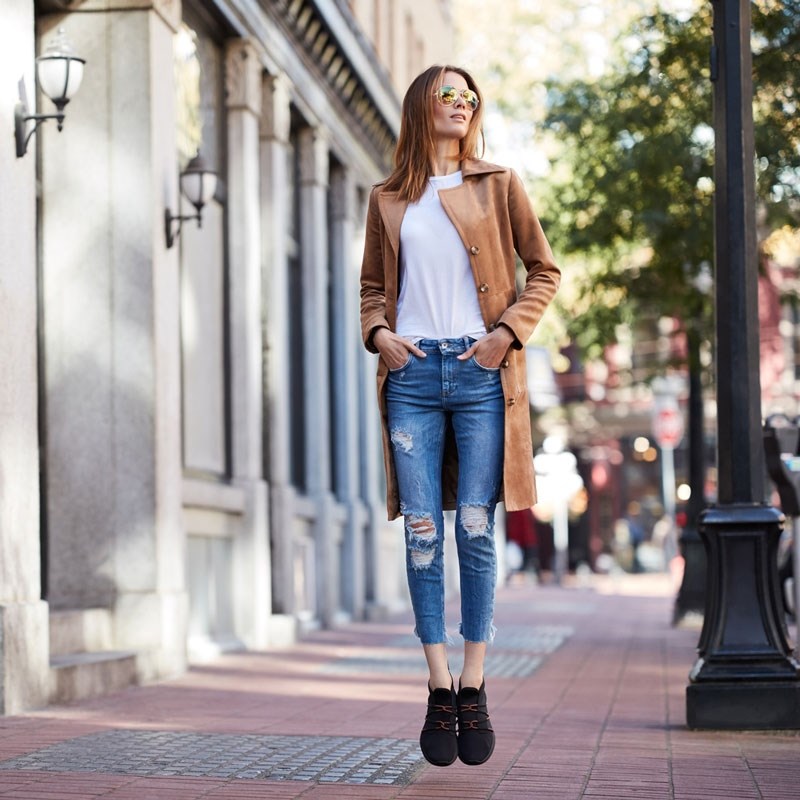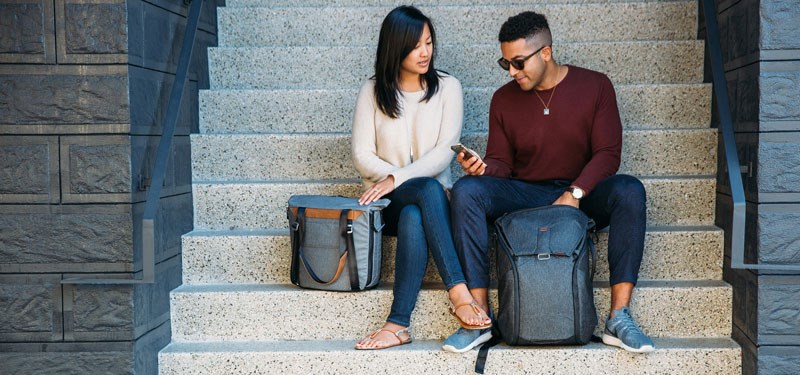The original purpose of Internet crowdfunding was to raise money from a crowd to fund a project (the clue is in the name). But the medium has evolved over the years to become a tool for creating buzz around a product, a way of building a community, and a chance for customers to get involved in product development.
What’s in it for backers?
Crowdfunding backers love to feel like they’re participating in something new and exciting. “You need to be in constant conversation with your customer base, always there for them to answer questions," says Vancouverite Gary Chang, who has just launched Skye Footwear via Kickstarter. "You can create relationships and connections, which is something a big-box brand can’t do.”
San Francisco’s Peak Design – an award-winning camera bag and accessories company – has run six campaigns and raised more than $13 million. It has two people working full-time to answer up to 400 inquiries a day during a Kickstarter. “Our customers are so hungry for product details that we can feed them information non-stop," explains Adam Saraceno, the brand’s chief marketing officer. "With the website, we wouldn’t put more than a couple of bullets. For Kickstarter, people want pictures, videos and live hangouts. It’s part of what gives them a sense of ownership."
Backers also get the opportunity to be involved in the development of a product. For example, Knix Wear – a brand that made its name on Kickstarter with seamless athletic bras and underwear – introduced a padded version of its Evolution bra and different colours as a direct result of interaction with its backers, says founder Joanna Griffiths.
Some brands will offer weird and wonderful experiences in exchange for high donations. That’s not Knix Wear’s approach. “In the early days, we tried to be creative – backers could give $1,000 for a photoshoot – but we realized that’s not what people want. They just want to be first,” says Griffiths. And, says Saraceno, pie-in-the-sky campaigns can be more hassle than they’re worth. “They’re tempting – maybe some rich dude will want to pay $5,000 to come see his bag being made – but the fulfilment is a nightmare and ultimately these things are just a distraction from your actual product.”
Hard work to follow through
Brands need to support campaigns with PR efforts – Griffiths attributes some of the success of her Evolution Bra campaign to a social-media post by George Takei. Not hitting your goal means you’re on record as having missed your mark. And afterward, there’s the question of delivering the goods – and delivering them on time – or you risk losing all the goodwill you’ve built during the campaign.
Beyond fashion
Saraceno balks at the description of Peak Design as a fashion brand. His company makes equipment to help people transport stuff – bags, clips, straps and so on. Its main customer base is creatives, and the first product, launched in 2011, was a clip that allows a DSLR camera to be secured to the body. “There’s a fashion nature to all our products – we make things that people wear and people care about how they look. But the main thing is really utility: functional, beautiful gear that solves problems," he says.
Skye Footwear’s shoes are innovative, too. Inspired by Gary Chang’s experience of standing all day at trade shows, they’re comfy enough for long wear, but good-looking as well, and all the materials used are biodegradable or recyclable. And Knix Wear products aren’t pure fashion either – the company makes knickers with built-in pantyliners, and ultra-comfortable, reversible, anti-odour bras.
“A fashion brand launching a beautiful new collection might not get the coverage they need to drive a campaign. You need something feature-driven, maybe technical, with a story behind it that will pull in an audience,” says Griffiths.
Saraceno adds that crowdfunded businesses typically do well with younger early adopters. “We launched in 2011 with a product that was an accessory for a DSLR camera. People with fancy cameras are tech-savvy and gear-orientated. Almost all of them are going to invest in accessories. At that time, Kickstarter was fairly new and there was a disproportionate number of tech-savvy people on the site,” he explains.

Crowdfunding, longterm
It’s early days for Chang and Skye Footwear, but his first Kickstarter has been a hit (the company exceeded its target of $30,000 by $13,000) and he’ll be launching another campaign on Indiegogo soon. The first batch of products will be delivered in March 2017.
In spite of her success (the Kickstarter campaign for the Evolution Bra raised over $1.5 million, surpassing the initial goal by more than 5,000 per cent), Griffiths has decided to step away from the method because it’s so time-consuming. “Going forward, we’ll take the principles of crowdfunding, involving customers in the product development to get them enthused. We’ll always ask if there’s a product story or an innovation story that will resonate with customers and media,” she says.
Crowdfunding remains an integral part of Peak Design, and Saraceno believes it will continue to be successful for other companies, too. But he has a warning for would-be entrepreneurs. “A lot of people see brands like us making lots of money on Kickstarter and think, 'OK, I’m going to make a lot of money on Kickstarter.' But what it boils down to is the same things that make any business successful: hard work, luck, and having a great product.”



